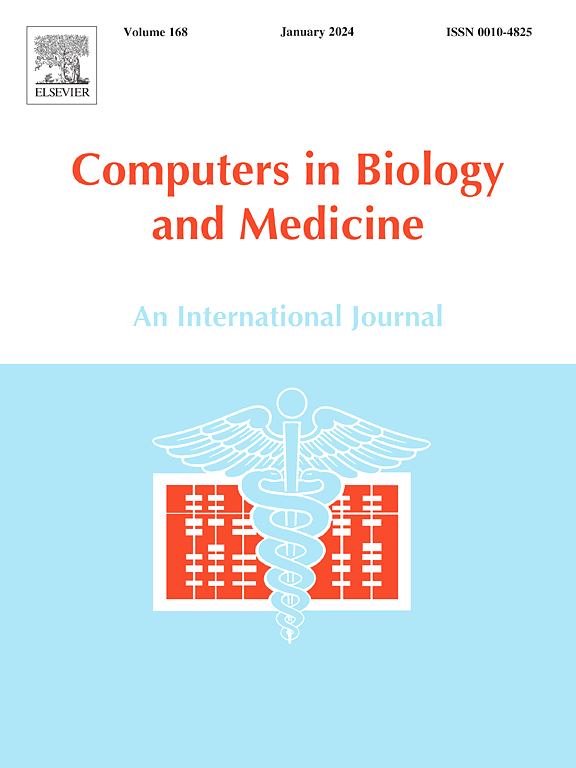IF 7
2区 医学
Q1 BIOLOGY
引用次数: 0
摘要
过敏性鼻炎是一种破坏性健康并发症,会影响日常生活质量,全球约 40% 的人口深受其害。尽管有各种治疗方案,但许多患者仍在与顽固的症状和副作用作斗争,这凸显了对创新治疗方法的需求。因此,找出更有效、副作用更小的基于途径和机制的靶向疗法,可以帮助目前的治疗方法,并提供新的治疗优势。本研究旨在通过采用包括网络药理学、分子对接、ADMET、相似性、药源模型、量子化学和基于机器学习的 QSAR 模型等在内的硅学方法,确定治疗过敏性鼻炎的潜在候选药物。研究人员从三种传统的治疗过敏性鼻炎的药用植物--黄精、厚朴和白花蛇舌草--中获得了 241 个化合物,并分析了它们良好的 ADMET 特性。网络药理学发现了203个潜在的治疗靶点,通过蛋白-蛋白相互作用网络分析确定了15个中心靶点,其中大部分靶点在KEGG通路分析中证实在炎症和免疫通路中起关键作用。分子对接、相似性测试和药效学建模研究发现了有潜力的化合物槲皮素、银杏酸、乌拉尔宁、CID:90643991、CID:42607537、CID:76329670、Heracetin 和 Fisetin,它们与直接和间接参与过敏反应的关键调控靶点 NFKB1、TRAF6 以及关键细胞因子 IL5 和 IL6 有很强的结合亲和力。量子化学计算揭示了这些化合物的良好电子特性和反应活性。基于机器学习的 QSAR 模型预测了几乎所有化合物的 IC50 < 50 nM,表明这些化合物是强效抑制剂。因此,这项研究通过靶向关键的炎症和免疫途径,发现了一些治疗过敏性鼻炎的新型候选药物,可改善治疗效果并减少副作用,但还有待于进一步的实验验证。本文章由计算机程序翻译,如有差异,请以英文原文为准。
In-silico exploring pathway and mechanism-based therapeutics for allergic rhinitis: Network pharmacology, molecular docking, ADMET, quantum chemistry and machine learning based QSAR approaches
Allergic rhinitis is a devastating health complication that interrupts the quality of daily life and significantly affects around 40 % of the population worldwide. Despite the availability of various treatment options, many patients continue to struggle with persistent symptoms and side effects, highlighting the need for innovative therapeutic approaches. Therefore, identifying pathway and mechanism-based targeted therapies with more effective and fewer side effects could aid current therapeutics and provide novel therapeutic advantages. This study aimed to identify potential drug candidates for allergic rhinitis treatment by employing in-silico approaches, including network pharmacology, molecular docking, ADMET, similarity, pharmacophore modeling, quantum chemistry, and machine learning-based QSAR modeling. From three traditionally used medicinal plants known as allergic rhinitis curing, Xanthium strumarium, Magnolia liliiflora, and Tylophora indica, 241 compounds were obtained, and their favorable ADMET properties were analyzed. Network pharmacology revealed 203 potential therapeutic targets, with 15 hub targets identified through protein-protein interaction network analysis and most of them play key roles in inflammatory and immune pathways confirmed by KEGG pathway analysis. Molecular docking, similarity testing, and pharmacophore modeling studies identified promising compounds Quercetin, Yinyanghuo E, Uralenin, CID:90643991, CID:42607537, CID:76329670, Heracetin, and Fisetin exhibiting strong binding affinities with key regulatory targets, NFKB1, TRAF6, and key cytokines IL5, and IL6 that directly and indirectly involved in allergic reactions. Quantum chemistry calculations revealed favorable electronic properties and reactivities of these compounds. The machine learning-based QSAR model predicted IC50 < 50 nM for almost all compounds, indicating highly potent inhibitors. Hence, this in-silico study identified some novel promising drug candidates for treating allergic rhinitis by targeting crucial inflammatory and immune pathways, offering improved treatment outcomes and reduced side effects, subject to further experimental validation.
求助全文
通过发布文献求助,成功后即可免费获取论文全文。
去求助
来源期刊

Computers in biology and medicine
工程技术-工程:生物医学
CiteScore
11.70
自引率
10.40%
发文量
1086
审稿时长
74 days
期刊介绍:
Computers in Biology and Medicine is an international forum for sharing groundbreaking advancements in the use of computers in bioscience and medicine. This journal serves as a medium for communicating essential research, instruction, ideas, and information regarding the rapidly evolving field of computer applications in these domains. By encouraging the exchange of knowledge, we aim to facilitate progress and innovation in the utilization of computers in biology and medicine.
 求助内容:
求助内容: 应助结果提醒方式:
应助结果提醒方式:


